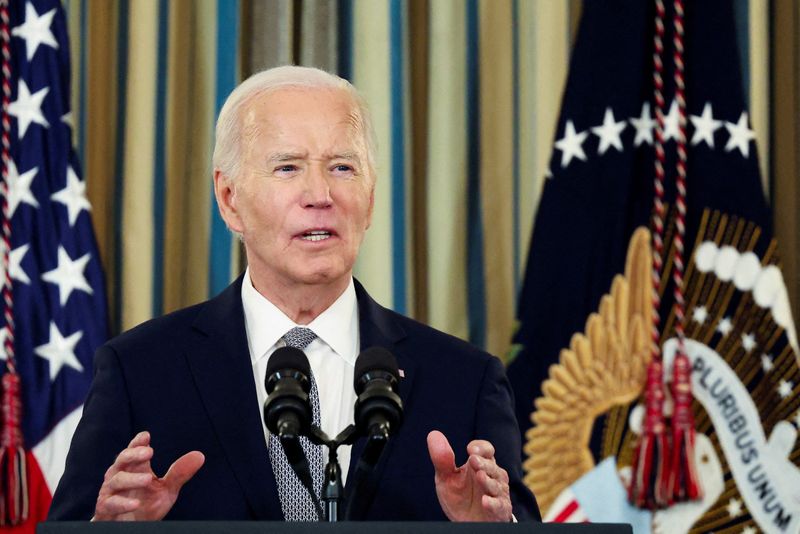Commodities
Biden to ban new oil drilling over vast areas of US Atlantic, Pacific waters, Bloomberg News reports

(Reuters) – President Joe Biden is set to ban new offshore oil and gas development across 625 million acres (250 million hectares) of U.S. coastal territory, Bloomberg News reported on Friday.
The ban, to be announced on Monday, rules out the sale of drilling rights in stretches of the Atlantic and Pacific oceans and the eastern Gulf of Mexico, said the report, citing unidentified people familiar with the matter.
Biden is leaving the possibility open for new oil and leasing in the central and western areas of the Gulf of Mexico, which account for around 14% of the nation’s production of these fuels, the report said.
The White House did not immediately respond to a Reuters request for comment outside of business hours.
The ban would solidify Biden’s legacy on addressing climate change and his goal to decarbonize the U.S. economy by 2050.
The New York Times (NYSE:) reported that a section of the law Biden’s decision relies on, the Outer Continental Shelf Lands Act, gives a president wide leeway to bar drilling and does not include language that would allow President-elect Donald Trump or other future presidents to revoke the ban.

Biden, Trump and Trump’s predecessor, Barack Obama, all used the law to ban sales of offshore drilling rights in some coastal areas.
Trump tried in 2017 to reverse Arctic and Atlantic Ocean withdrawals Obama had made at the end of his presidency, but a federal judge ruled in 2019 that the law does not give presidents the legal authority to overturn prior bans.
Commodities
Oil prices rise; U.S. crude inventories plunge, Russia-Ukraine truce eyed
Commodities
India’s Reliance to stop buying Venezuelan oil over US tariffs, sources say
Commodities
Oil prices climb on Venezuela supply worries

 Forex3 years ago
Forex3 years agoForex Today: the dollar is gaining strength amid gloomy sentiment at the start of the Fed’s week

 Forex3 years ago
Forex3 years agoUnbiased review of Pocket Option broker

 Forex3 years ago
Forex3 years agoDollar to pound sterling exchange rate today: Pound plummeted to its lowest since 1985

 Forex3 years ago
Forex3 years agoHow is the Australian dollar doing today?

 Cryptocurrency3 years ago
Cryptocurrency3 years agoWhat happened in the crypto market – current events today

 World3 years ago
World3 years agoWhy are modern video games an art form?

 Commodities3 years ago
Commodities3 years agoCopper continues to fall in price on expectations of lower demand in China

 Economy3 years ago
Economy3 years agoCrude oil tankers double in price due to EU anti-Russian sanctions























